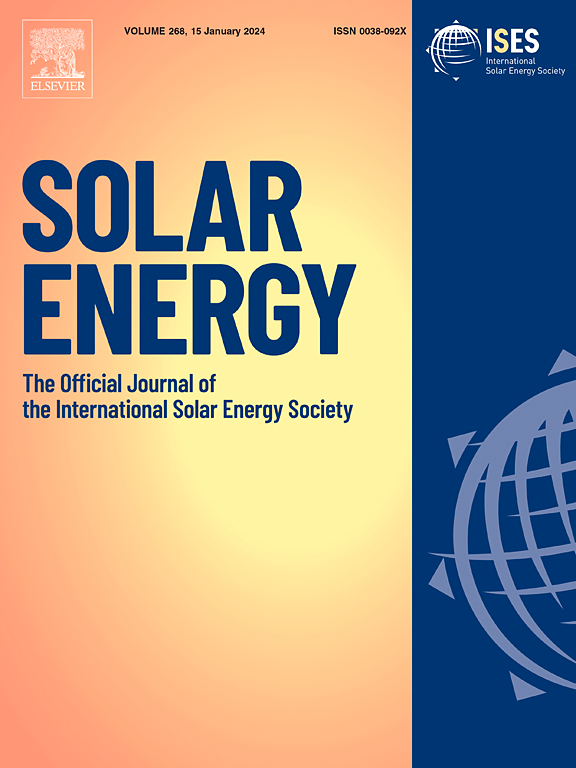基于改进的 Harris Hawk 优化算法的生成式定日镜场布局优化与应用
IF 6
2区 工程技术
Q2 ENERGY & FUELS
引用次数: 0
摘要
本研究提出了一种基于光学效率的无模式布局方法,用于定日镜位置的连续生成和优化。以年加权余弦效率为目标函数,通过对整个区域最佳点的连续搜索,生成初始布局。然后根据年度加权光学效率对所有定日镜进行二次优化和选择。效率高于阈值的点会被保留,而效率低的点会被舍弃,并重新进入搜索优化,直到确定所有符合条件的定日镜位置,最终形成高效的定日镜区域。无生成模式布局优化所带来的效率提升主要归功于使用年加权余弦效率的初始搜索(提高了日光浴场的年加权余弦效率)和二次筛选优化(提高了遮光和遮挡效率)。与最初的 PS10 定日镜场相比,年加权效率提高了 1.77%。最后,提出了两种基于聚类的无模式布局方法。K-means 聚类中的所有点到参考中心的总距离为 58,238.1974 米,与未经处理的原始定日镜场相比减少了 71.18%。基于高斯混合模型的方法则将与参考中心的距离缩短了 66.90%。基于光学效率的分类反映了定日镜场光学效率的整体分布结构,降低了无图案定日镜场的布局难度,为将理论研究转化为实际工程应用提供了可行性。本文章由计算机程序翻译,如有差异,请以英文原文为准。
Generative heliostat field layout optimization and application based on an improved Harris Hawk Optimization algorithm
This study proposes a pattern-free layout method for continuous generation and optimization of heliostat positions based on optical efficiency. Using annual weighted cosine efficiency as the objective function, the initial layout is generated through a continuous search from the optimal point of the entire field. This is followed by a secondary optimization and selection of all heliostats based on annual weighted optical efficiency. Points with efficiency above the threshold are retained, while low-efficiency points are discarded and re-entered into the search optimization until all eligible heliostat positions are identified, ultimately resulting in a highly efficient heliostat field. The efficiency improvement from the generative pattern-free layout optimization is primarily attributed to the initial search using annual weighted cosine efficiency, which enhances the annual weighted cosine efficiency of the field, and the secondary screening optimization, which improves shading and blocking efficiency. Compared to the original PS10 heliostat field, the annual weighted efficiency increased by 1.77%. Finally, two clustering-based pattern-free layout methods are proposed. The total distance from all points within a K-means cluster to the reference center is 58,238.1974 m, a reduction of 71.18% compared to the untreated original heliostat field. The method based on the Gaussian Mixture Model reduces the distance to the reference center by 66.90%. Classification based on optical efficiency reflects the overall distribution structure of the heliostat field’s optical efficiency, reducing the layout difficulty of pattern-free heliostat fields and providing feasibility for transforming theoretical research into practical engineering applications.
求助全文
通过发布文献求助,成功后即可免费获取论文全文。
去求助
来源期刊

Solar Energy
工程技术-能源与燃料
CiteScore
13.90
自引率
9.00%
发文量
0
审稿时长
47 days
期刊介绍:
Solar Energy welcomes manuscripts presenting information not previously published in journals on any aspect of solar energy research, development, application, measurement or policy. The term "solar energy" in this context includes the indirect uses such as wind energy and biomass
 求助内容:
求助内容: 应助结果提醒方式:
应助结果提醒方式:


